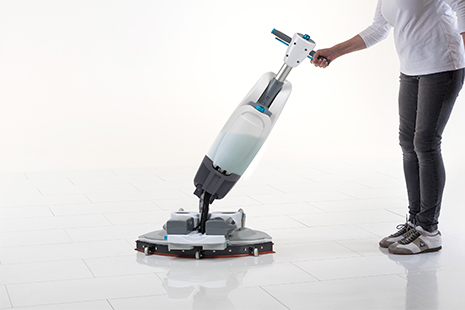Sanitizing or disinfecting – what’s the difference?
We currently live in uncertain times, with a pandemic dominating daily life. As proper cleaning reduces the spread or the COVID-19 coronavirus, there’s more focus on the power of clean than ever. One of the many questions raised is: should we sanitize or should we disinfect?
First things first, how does the COVID-19 virus spread?
At this time, it seems that the coronavirus spreads mainly from person to person. This can happen when people are in close contact with each other. When an infected person coughs or sneezes, droplets are produced. These droplets could be inhaled or land in the mouths or noses of people nearby. This explains why social distancing is so important.
A second way the coronavirus spreads, is through contact with infected surfaces or objects. It’s possible for a person to get COVID-19 by touching a surface or object that has the virus on it and then touching their own mouth, nose, or eyes.
How long can the virus survive on different surfaces?
• 3 hours in the air
• 4 hours on copper
• 24 hours on cardboard
• 48-72 hours on plastic and stainless steel
Needless to say, cleaning and hygiene are important. Wash your hands with water and soap for at least 20 seconds whenever you’ve touched anything outside your home (also when receiving packages).
Why basic cleaning doesn’t cut it anymore
It’s important to note that the basic cleaning of a surface (removing dust, dirt and debris) still leaves risk for cross-contamination. Without proper cleaning equipment and agents, you could be spreading disease in the absence of a germicide. It’s recommended to first clean the visible dirt and then disinfect or sanitize.
When should we sanitize?
Sanitizing is a step up from cleaning. It removes up to 99.99% of harmful bacteria in less than 30 seconds and decreases the risk of infection. Sanitizing is meant to reduce, not kill, the occurrence and growth of fungi, bacteria and viruses.
Overall, it’s best to choose sanitizing for cleaning surfaces that don’t (typically) come into contact with dangerous germs, or those that are better left without a strong chemical treatment. That’s why sanitization is often used for cooking tools, food preparation surfaces and objects that children come into close contact with, such as toys.
When should we disinfect?
Disinfecting kills all the germs on surfaces and further reduces the risk of contamination. But while sanitizing takes up to 30 seconds, disinfecting often takes much longer (check the contact times of the cleaning agent you use).
Disinfection is best used for high-touch areas, such as doorknobs, remotes, light switches and keyboards (note that it’s recommended to clean a phone with microfiber to prevent damaging the screen). It’s always recommended to disinfect surfaces and objects that come into contact with bodily fluids, like hospital rooms, sanitary spaces and sanitary furniture (e.g. toilets, sinks, showers).
Disinfecting or sanitizing?
In short, sanitizing and disinfecting both aim to reduce cross-contamination by killing germs on surfaces. Disinfecting kills more germs than sanitizing and is therefore slightly more effective, especially on viruses and fungus. Whichever method you use, don’t underestimate the power of clean.


